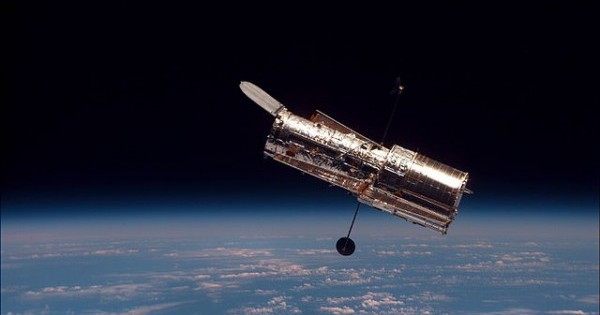Galileo’s Spyglass
The telescope resulted from his improvements to a mere curiosity

Galileo did not invent the telescope. But he did modify a curiosity called the spyglass that in 1609 was beginning to be sold by spectacle makers and peddlers in Europe. He improved it and he pointed it toward the sky.
The spyglass grew out of the technology of eyeglasses. If I’d been born before 1300, I would not be writing this. I would not be able to see anything as minuscule as a word on a page. Reading glasses, made of convex lenses, became common after 1300, and by the middle of the 1400s, spectacle makers were grinding concave lenses for myopic persons who wanted to see who was waving at them from across the road. These two ways of grinding glass into lenses are significant because a telescope employs both types—a weak convex lens with either a strong convex or strong concave lens. It was a spyglass because of its remarkable military applications—you could spy on enemy ships and military maneuvers long before your enemy could espy you. Objects could be magnified three or four times.
At the time Galileo was a mathematics professor at the University of Padua who boarded students and ran a business selling instruments, including spectacle lenses, on the side. He received word of the spyglass and made one for himself. “What he did with the new device over the next six months was crucial to the history of astronomy,” writes Albert Van Helden, whose translation and introduction to Galileo’s highly readable announcement of his discoveries, Sidereus Nuncius or the Sidereal Messenger (Starry Messenger), makes it the edition you want to read. Galileo worked to improve his instrument, and by December he’d fabricated one that magnified about 20 times. When he turned it toward the sky his discoveries were, in his words, “of infinite amazement.”
First he looked at the moon and wrote, “It is most beautiful and pleasing to the eye to look upon the lunar body.” He informed the world (the part of it that chose to believe him) that the moon’s surface was not smooth, perfect, and unblemished, as was thought, but “uneven, rough, and crowded with depressions and bulges.”
The next amazement had to do with the swirling white haze—“whitish clouds”—that to bare eyes makes up big swaths of the Milky Way. “If you direct a glass to any of them,” he wrote, “you will meet with a dense crowd of stars.”
And finally, most astonishing and profound, Galileo pointed his spyglass toward Jupiter and discovered four new “wandering stars.” (Back then planets were called “wandering stars” and stars were called “fixed stars.”) For 53 consecutive nights (minus nine cloudy nights), he recorded the locations of these celestial bodies and determined that they were moons orbiting Jupiter. He termed them the Medicean moons (he was plumping up his CV, hoping for research funds from Cosimo II de’ Medici, Grand Duke of Tuscany). We call them the Galilean moons—Io, Europa, Ganymede, and Callisto.
Galileo’s discoveries and prompt publication brought him international fame. Knowledge of Jupiter’s moons (we now know there are more than 50) supported the Copernican view that placed the Earth in the heavens. One argument in favor of the old, Aristotelian, view—that Earth was the center of all celestial motion—was the existence of our moon revolving around us. Galileo’s Galilean moons circling Jupiter killed that argument. In Van Helden’s words, the novelty and importance of Galileo’s 1609 discoveries cannot be overstated.
The spyglass was the first scientific instrument to amplify the human senses, to make previously invisible objects visible. Ever since Galileo pointed it up to the skies, scientists have been tinkering with it. I wish he could come back for one day and see the views provided by that improved spyglass known as the Hubble telescope. Galileo would be even more amazed.
Look for Priscilla Long’s next Science Frictions essay on January 2.

